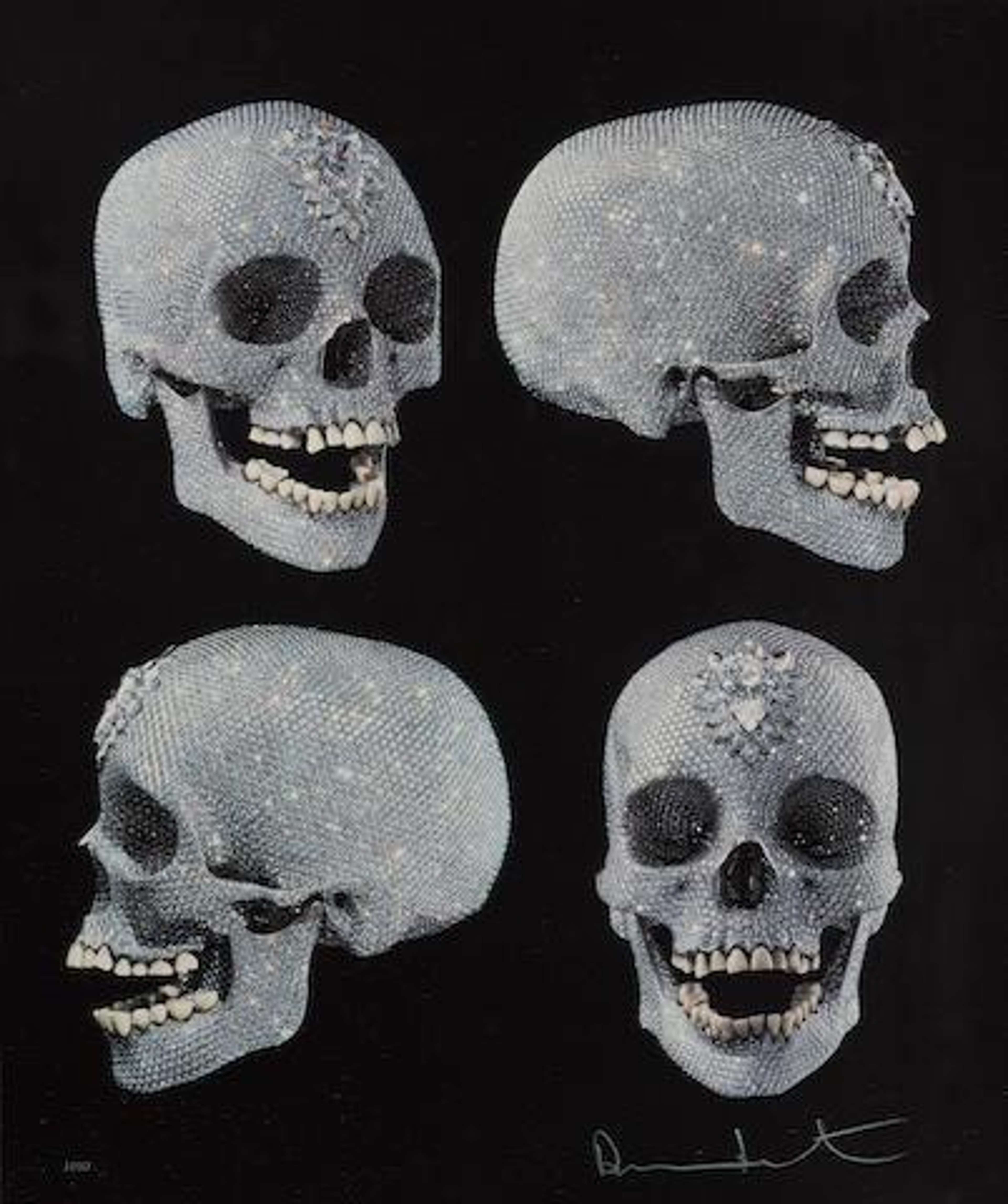
For The Love Of God (four, black)

For The Love Of God (four, black)
Signed Print
Damien Hirst
£3,700-£5,500
$7,500-$11,000 Value Indicator
$7,000-$10,000 Value Indicator
¥35,000-¥50,000 Value Indicator
€4,250-€6,500 Value Indicator
$40,000-$60,000 Value Indicator
¥770,000-¥1,140,000 Value Indicator
$4,950-$7,500 Value Indicator
There aren't enough data points on this work for a comprehensive result. Please speak to a specialist by making an enquiry.
58 x 49cm, Edition of 1000, Screenprint
Auction Results

Track auction value trend
Meaning & Analysis
For The Love Of God (four, black) is an early print after Damien Hirst’s 2007 sculpture of the same name. This print, signed in the bottom right, depicts the skull in three quarters view, in profile from either side, and frontally. The skulls are presented against a black background.
For The Love of God (four, black) is distinct in presenting multiple different views of his famous For The Love Of God sculpture in one singular print. The various different orientations of the skull enable the viewer to consider the totality of the use of diamonds. The platinum cast of a real skull is replete with 8,601 diamonds. The white teeth, the original teeth from the 18th century person, stand out against the black backdrop and the grey hue of the diamonds.
Not only have skulls been a recurring theme in Hirst’s oeuvre, but he has continually returned to the For The Love Of God sculpture to produce more prints. However, this early print is one of the first to represent multiple different views of the skull in one sheet. The work ought to be compared to Hirst’s 2011 print, For The Love Of God (four, white), which adopts the same composition. The use of a black background gives the skull a distinct effect – the diamonds and the teeth stand out against the disappearing background. This allows him to explore the materiality of the diamonds: Hirst has previous questioned their intrinsic value.